Types of Foundation Repair Methods
You’ve spotted the signs, cracked walls and floors, leaky plumbing, and sticky doors. You’ve looked it up and discovered that these are all key signs of foundation issues. However, once you know your foundation is in trouble and in need of repairs, you may be wondering what options you have.
Factors that Influence the Foundation Repair Approach
The type of repair you need will depend on the soil type, climate, foundation build, and any additional outstanding problems. Non-structural cracks in foundations are often vertical or diagonal—these are cracks caused by the expansion and contraction of the foundation’s concrete. Structural cracks are horizontal and caused by settling soil that has caused the foundation to shift.
A consultation with foundation repair experts should identify the cause of the foundation problem and provide you with a recommendation on how to solve your particular situation. For now, here’s some information to help you get familiar with several types of foundation repair methods.
Foundation Repair Method #1: Sealants and Masonry Patches
Cracks in the foundation can sometimes be repaired by patching the crack and covering it with a waterproof masonry sealer. Spotting and repairing cracks early on is important because your foundation supports your entire house.
Commonly used sealers for minor cracks include hydraulic cement, vinyl concrete, epoxies, silicone, or polyurethane. The type of mixture used will depend on the severity of the crack.
It’s better to identify the problem early on and repair it to prevent water infiltration and further damage.
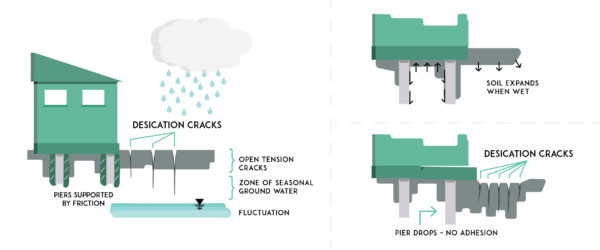
NOTE: Foundation problems are common in North Texas because we have expansive soil which generally acts like a sponge. As soil absorbs water, it swells; and as it loses water, it shrinks. This expansion and contraction movement causes your foundation to move, and the pressure can cause it to crack. The best way to reduce foundation movement is through a preventative maintenance watering program.
Foundation Repair Method #2: Slab Jacking
Slab jacking is a method used to lift concrete that is uneven or sinking. This process is also known as mudjacking, concrete lifting, and slab leveling. This method is ideal for small jobs such as raising porches, steps, decks, walkways, garage floors, and driveways.
Slab foundations sink or tilt when the soil underneath shifts or collapses and leaves empty spaces below. Professional foundation companies have access to the equipment and knowledge of local soil conditions to repair a settling home foundation.
To lift the concrete, foundation repair companies use the slab jacking method, which consists of drilling 2” holes through the concrete foundation and into the sunken spaces below. A solution of natural elements (soil, cement, etc.) is injected through the hole, filling the void. As the solution expands, the fallen slab is raised back into place.
An alternative method to slab jacking is polyurethane injection. Similar to the slab jacking process, polyurethane is injected through holes into the concrete to fill voids below. Instead of filling the space with natural elements, a dense and light-weight material is used.
These two slab-lifting methods serve the same function and work well on smaller projects. However, both are short-term fixes that may need to be repeated every few years. Injected materials are heavy and cause new soil compression beneath the slab. Because polyurethane injection is lighter, it tends to last longer. However, this process is not widely available.
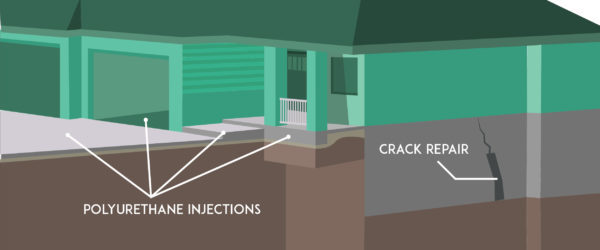
Foundation Repair Method #3: Piling
Concrete piers, pressed pilings, steel piers, and bell bottom piers are some examples of piling types used for foundation repairs. These pier and beam foundation repair methods are long-term solutions to foundation problems and do a better job of returning your home’s foundation to its original level than slab jacking.
Pressed Concrete Pilings
Pressed concrete pilings are durable foundation piers used for interior and exterior repairs. They work well on pier and beam houses as well as concrete slab foundations. Properly installed pressed concrete piers need to be driven deep into the ground to achieve stability. Typically, this is about 12 feet deep.
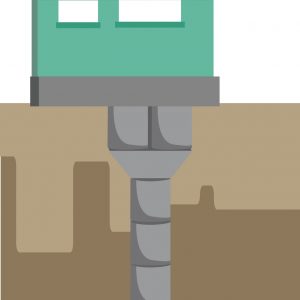
Poured Concrete Piers
Poured concrete piers in residential repair are driven about 10 feet deep and take about 7 to 10 days for the foundation leveling to cure. Installation time for poured concrete piers is longer than it is for pressed concrete pilings because the latter method uses precast concrete segments that are already cured at the time of installation.
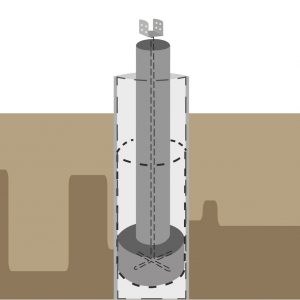
Belled Concrete Piers
Bell bottom concrete piers are installed in a similar manner to poured or drilled concrete piers. The bottom of the pier has a bell shape “foot” that is designed to provide a wide area of support to the pier. Like poured concrete piers, bell bottom piers are built by pouring concrete into an excavated hole and placing steel into the wet concrete.
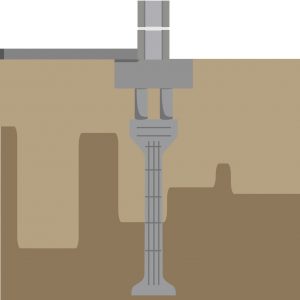
Steel Piers
Steel piers are highly recommended as permanent foundation repair solutions. Steel piers are strong and able to be driven as deep as 100 feet, providing incredible stability to your home’s foundation. The depth that steel piers are able to reach means that the piers will not move in expansive clay soil because the piers should be driven down to bedrock.
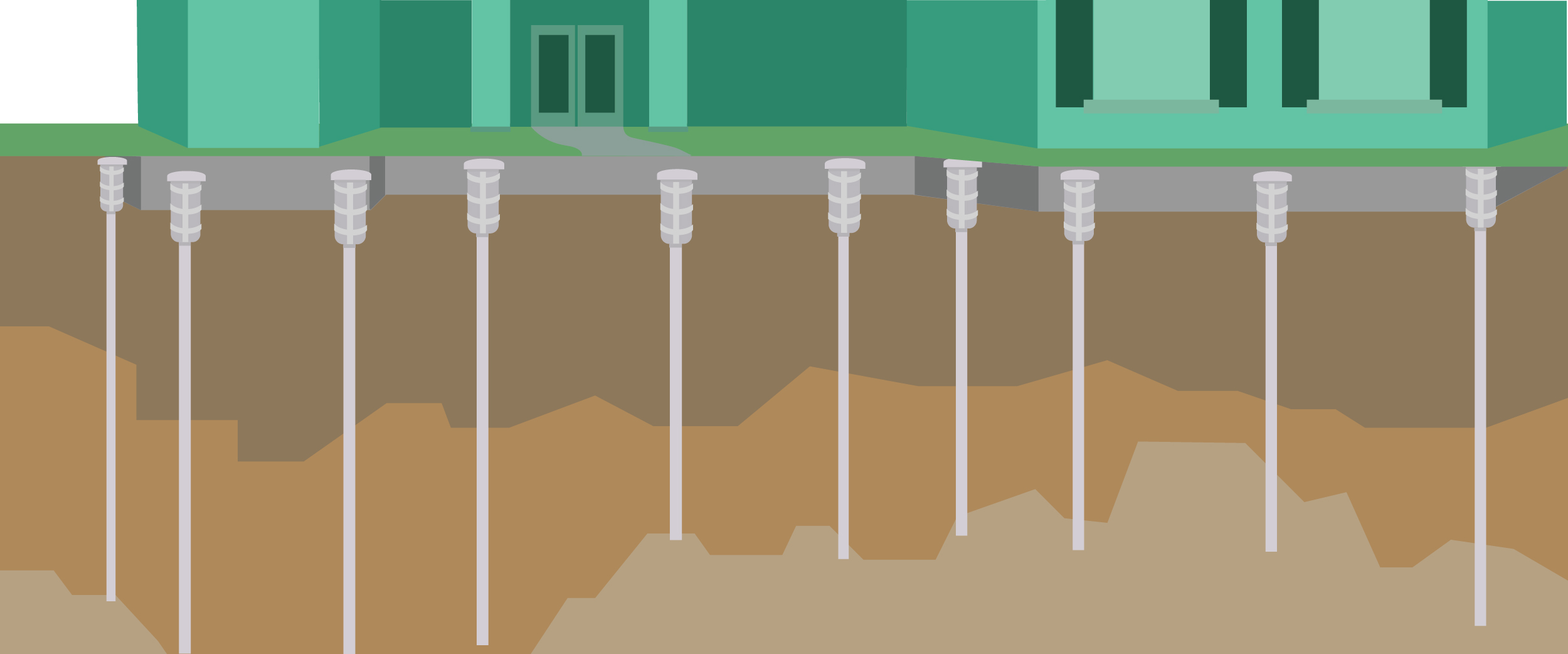
Helical Steel Piers
Also known as anchors, helical piers are commonly ideal for repairing lightweight concrete slab foundations and pier and beam foundations. In addition to use in foundation repair, helical piers are also used to secure new foundations.
Helical piers are used when conditions prevent the use of other methods. These piers are threaded into the ground to a predetermined load capacity and the weight of the structure is transferred to the piers and thus to the load-bearing soil.
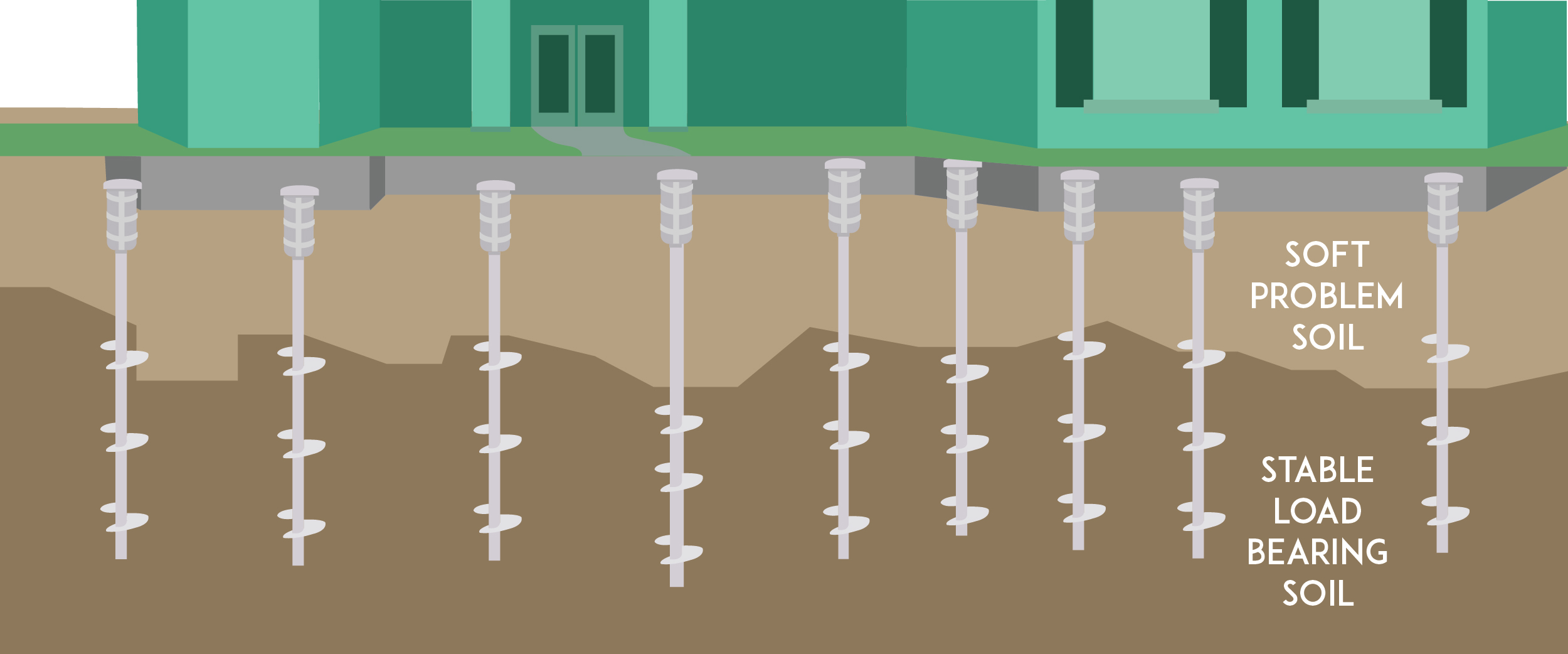
Finding the Foundation Solutions that Meet Your Needs
As you can see there are lots of solutions available for foundation problems, and how long your foundation repair will last depends on the method you select. Some solutions provide short-term relief and others offer a longer or even permanent fix. The options that are available for your foundation repair depend on a variety of factors. Consult with the concrete foundation experts at Ecoscape Foundation & Home Services to learn what solution will work best for your home and your budget.

